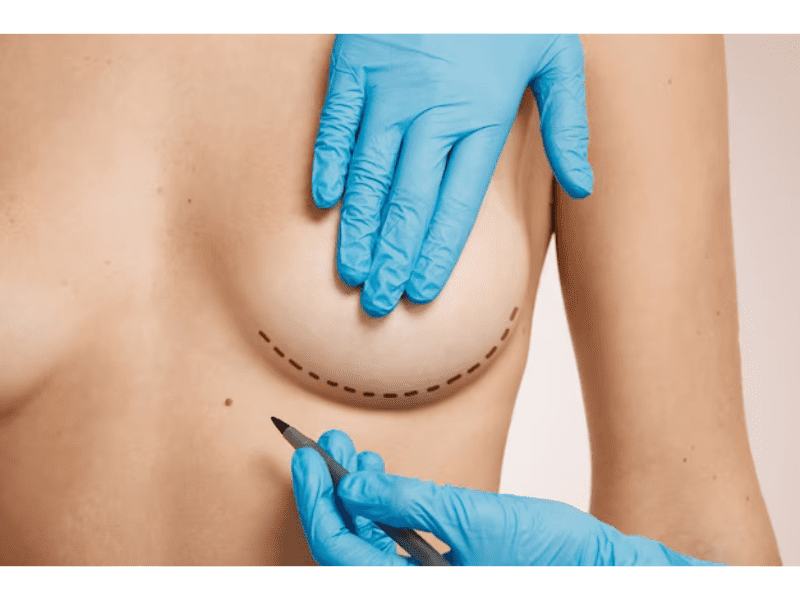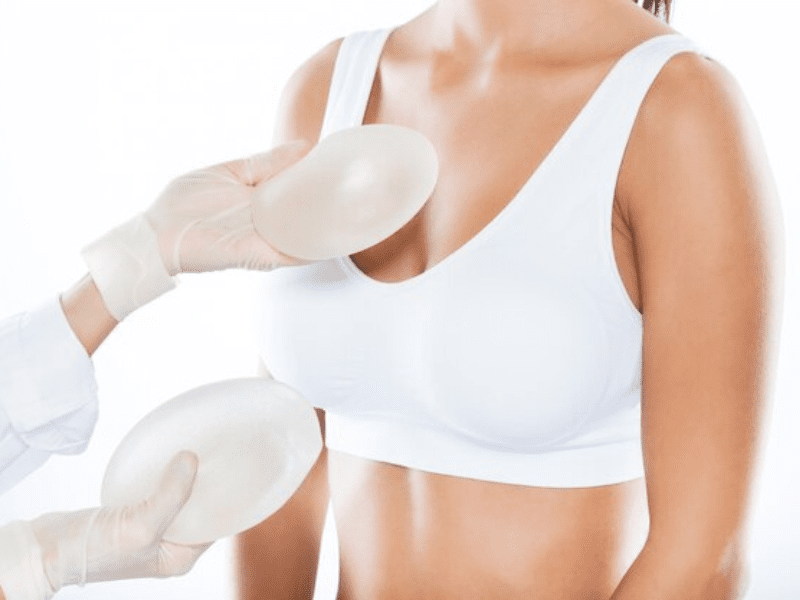جاهای دیدنی تهران
جاهای دیدنی تهرانجاهای دیدنی تهران
جاهای دیدنی تهرانBreast Augmentation Methods
What Is Breast Augmentation? Introduction Breast Augmentation Methods
Breast augmentation in Iran is a prevalent cosmetic surgery procedure designed to enhance breast size and shape through the use of either breast implants or fat transfer. Various types of implants and different breast augmentation methods are available, underscoring the importance of discussing personalized options with your surgeon to determine the most suitable approach for your needs.
What Are the Different Breast Augmentation Methods?
There are several methods of breast augmentation, each with its own techniques and considerations. The two primary approaches involve using breast implants or utilizing fat transfer. Here are the main methods:
Breast Implants:
Saline Implants: These implants are filled with sterile saline (saltwater) and can be adjusted after surgery. In case of a rupture, the saline is harmlessly absorbed by the body.
Silicone Gel Implants: These implants are filled with silicone gel, which closely resembles the natural feel of breast tissue. Silicone implants require regular monitoring to detect ruptures.
Structured Implants: These implants have an internal structure to provide a more natural feel. They consist of saline or silicone gel but have an additional layer to maintain their shape.
Fat Transfer:
Autologous Fat Transfer: This method involves liposuction to remove excess fat from one part of the body (e.g., abdomen, thighs) and injecting it into the breasts. It’s a more natural alternative and can be suitable for subtle enhancements.
Incision Techniques:
Inframammary Incision: The incision is made in the crease under the breast.
Transaxillary Incision: The incision is made in the armpit.
Periareolar Incision: The incision is made around the edge of the areola.
Placement Options:
Subglandular Placement: Implants are placed above the chest muscle.
Submuscular Placement: Implants are placed under the chest muscle.
The choice of method depends on factors such as personal preferences, body type, and desired outcomes. A thorough consultation with a qualified plastic surgeon is crucial to determine the most suitable method for an individual’s specific goals and circumstances.

Avamedi offers multiple other services such asRhinoplasty in Iran, revision rhinoplasty in Iran.
Why Do People Get Breast Augmentation Methods?
People choose to undergo breast augmentation methods for various personal and aesthetic reasons. Here are some common motivations:
- Enhanced Self-Esteem and Confidence: Breast augmentation can contribute to improved self-esteem and body confidence. For some individuals, achieving their desired breast size and shape can enhance overall body image and satisfaction.
- Aesthetic Goals: Some people pursue breast augmentation to achieve a specific aesthetic ideal or to address asymmetry, volume loss, or other appearance-related concerns.
- Post-Pregnancy Changes: Pregnancy, breastfeeding, and weight fluctuations can affect breast appearance. Breast augmentation methods may help restore or enhance breast volume and shape for individuals who have experienced changes due to pregnancy or breastfeeding.
- Reconstruction after Mastectomy: Breast augmentation is a common procedure for women who have undergone a mastectomy (removal of the breast) due to breast cancer. It is a crucial step in breast reconstruction, helping restore a sense of normalcy and femininity.
- Improvement of Body Proportions: Some individuals seek different breast augmentation methods to achieve a more balanced and proportionate figure. This can involve enhancing the size and shape of the breasts to better complement the rest of the body.
- Correction of Congenital Issues: Individuals with congenital conditions or developmental differences in breast size may opt for breast augmentation to address asymmetry and achieve a more symmetrical appearance.
It’s important to note that each individual’s motivations for breast augmentation are unique, and the decision is a personal one. Before undergoing the procedure, individuals typically consult with a qualified plastic surgeon to discuss their goals, expectations, and any potential risks associated with the surgery.
How Common Are Breast Augmentation Methods?
Breast augmentation methods, which involve the surgical placement of breast implants to enhance the size and shape of the breasts, have become relatively common in many parts of the world. The popularity of breast augmentations has varied over time and across different cultures.
Factors influencing the prevalence of breast augmentations include cultural ideals of beauty, societal attitudes towards cosmetic surgery, and advancements in medical technology. In some societies, there may be a greater acceptance and normalization of cosmetic procedures, contributing to higher rates of breast augmentations.
In the United States, for example, breast augmentation has been one of the most popular cosmetic surgical procedures for several years. According to the American Society of Plastic Surgeons (ASPS) statistics, hundreds of thousands of breast augmentation procedures are performed annually in the U.S. However, it’s essential to note that the popularity of cosmetic procedures can change over time, and regional variations exist.
It’s important to approach such procedures with careful consideration, understanding the potential risks and benefits, and consulting with qualified medical professionals to make informed decisions based on individual needs and circumstances.
What Are the Side Effects of Breast Augmentation Methods?
Breast augmentation methods, like any surgical procedure, carry potential risks and side effects. It’s important for individuals considering breast augmentation to be aware of these factors and discuss them thoroughly with a qualified plastic surgeon. Some possible side effects and complications of breast augmentation methods include:
Pain and Discomfort:
Pain and discomfort are common in the initial days following surgery. This can be managed with prescribed pain medications.
Swelling and Bruising:
Swelling and bruising of the breasts are normal after surgery but typically subside over time.
Changes in Sensation:
Temporary or permanent changes in nipple or breast sensation, including increased or decreased sensitivity, may occur.
Infection:
There is a risk of infection at the surgical site. Proper hygiene and post-operative care can help minimize this risk.
Hematoma and Seroma:
Collection of blood (hematoma) or fluid (seroma) in the breast area may occur, requiring drainage in some cases.
Implant Rupture or Leakage:
Implants can rupture or leak, leading to changes in breast shape and requiring additional surgery to replace the implants.
Capsular Contracture:
The formation of scar tissue around the implant (capsule) may tighten, causing the breast to feel firm and potentially changing its appearance. Additional surgery may be needed to address this.
Implant Displacement or Malposition:
Implants may shift or move from their original placement, leading to asymmetry or an unnatural appearance.
Anesthesia Risks:
As with any surgery, there are risks associated with anesthesia, including allergic reactions and complications.
Breastfeeding Challenges:
Breast augmentation can potentially impact breastfeeding, and women considering the procedure should discuss this with their surgeon.
It’s crucial for individuals to carefully follow post-operative care instructions, attend follow-up appointments, and communicate any concerns with their healthcare provider. As you know it can be differences between various breast augmentation methods risks and possible side effects.

How Long Do Breast Augmentation Methods’ Results Last?
The longevity of breast augmentation methods results can vary from person to person and is influenced by factors such as the type of implants used, the surgical technique, and individual factors. While breast implants are not considered lifetime devices, they are designed to be durable and long-lasting. Here are some considerations regarding the longevity of breast augmentation methods results:
Implant Lifespan:
Breast implants are not guaranteed to last a lifetime. On average, manufacturers often provide warranties for around 10 to 20 years. However, many implants last longer without issues.
Routine Monitoring:
Regular monitoring and follow-up appointments with a healthcare provider are essential to assess the condition of the implants over time. This may include imaging studies, such as mammograms or ultrasounds.
Potential for Reoperation:
Some individuals may need additional surgeries (reoperations) during their lifetime. Reasons for reoperation may include implant rupture, changes in breast appearance over time, or personal preferences for adjustments.
Natural Aging and Changes:
The breasts undergo natural aging and changes over time, regardless of implants. Factors such as weight fluctuations, pregnancy, and aging can impact the appearance of the breasts.
It’s important for individuals with breast implants to be aware of the potential need for future surgeries and to communicate any changes or concerns to their healthcare provider promptly.
Regular check-ups and discussions with a qualified plastic surgeon or healthcare professional are crucial for ensuring the ongoing health and satisfaction of individuals who have undergone breast augmentation. If any issues or concerns arise, prompt consultation with a healthcare provider is recommended to address them appropriately.
source:Breast Augmentation Methods


























